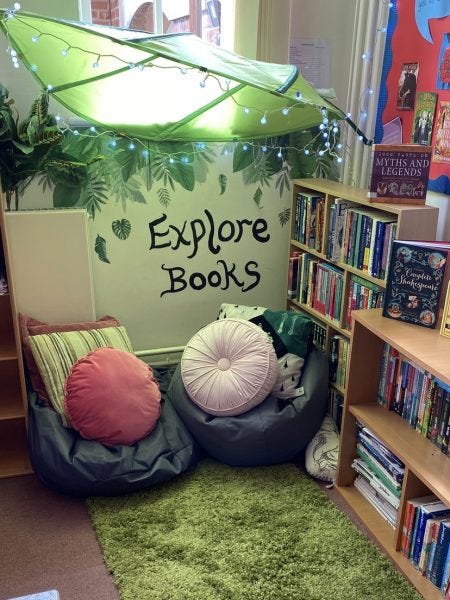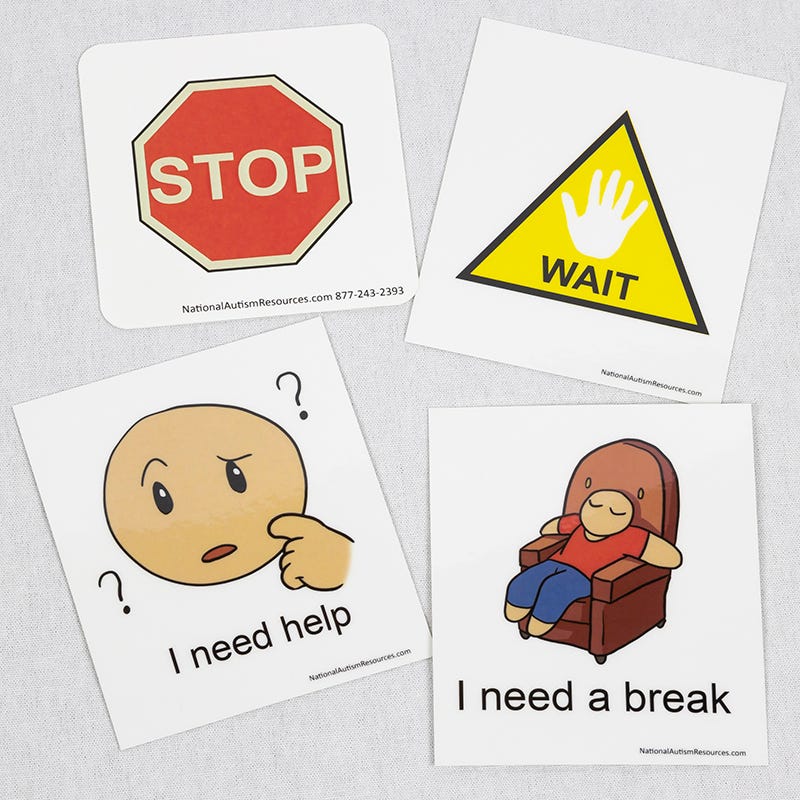🎨Creating an Inclusive Classroom📚
What if I told you it was possible to meet every learners need within a single classroom? Try these tips and see how your classroom culture changes!
It’s really easy to implement small routines or areas into your classroom or education space which can be transformational for all children but especially those with Social Emotional and Mental Health (SEMH) needs. This post will outline the different ideas you can implement. All ideas can be adapted to work for children within different age groups.
🌟 Create a Safe Space:
Imagine a classroom that feels like a haven—a place where students can truly be themselves. Designate a corner where they can retreat when overwhelmed, offering a quiet spot to doodle, relax, or simply sit peacefully. This safe space can feel like a warm blanket of acceptance and security.Examples: 📚 Reading corners are great. Using soft furnishings, posters of the class reads, calm lighting and sensory toys can be really beneficial in promoting self-regulation for all children.
Image from: https://images.app.goo.gl/r9noMpLnJEzRhdNM7
🌈 Focus on Emotional Literacy:
Emotions can be complex to understand, let alone express. You can help students decode them by using colourful emotion charts or “feelings jars” filled with slips of paper (or coloured in) for different emotions. There are loads of templates for these online. Activities like these help them to identify and communicate how they’re feeling, building a foundation for emotional self-awareness.Examples: A physical jar filled with coloured paper which represents different emotions or a paper jar coloured in with pens or pencils. A feelings wall where children can place a post-it note about how they’re feeling each day.
Image from: https://images.app.goo.gl/SsmE7GJC99M957Ck9
🎨 Encourage Expression Through Art:
Art isn’t just for creating masterpieces; it’s a therapeutic way to release emotions. Art sessions that allow children to express themselves through colours, shapes, and textures. A swirl of paint or squish of clay can sometimes say more than words.Example: You can use the same colours in the previous example and then draw or colour a piece of paper to outline how they feel. You can do this on a blank piece of paper or use a template from a free website such as SuperColouring
Image from: https://images.app.goo.gl/dRraq5jRb8uUXNVH6
🌱 Teach Mindfulness:
Introducing mindfulness is like giving students a superpower for staying grounded. Simple practices like deep breathing or a mindful minute before exams help them find calm amidst life’s challenges, promoting focus and emotional regulation.Example: Again, there are loads of mindfulness activities out there! Everything from colouring, breathing and brain-breaks to mindfulness snack time! However, if you want to start small, I cannot recommend breathing enough! It sounds silly but having 5 deep breaths 3 times a day can really help to regulate and centre everyone! When you’re taking the deep breath, breathe in for around 7 seconds and exhale for 7 seconds! Try it now, you’ll notice a difference! 🧘
Image from: https://images.app.goo.gl/BVV1cchSdmRoU48J8
🤝 Implement a Buddy System:
A supportive buddy can make school feel more manageable. Pair students with SEMH needs with an empathetic peer to offer support, companionship, and encouragement throughout the day. Sometimes, a friendly face is all they need. This can also work with a key member of staff. In an ideal world, the child would have a both! Buddies in school can work wonders! Especially if a child is suffering from ESNA.Example: Buddies can be in the same year or in a different class/year group. Whatever you think will work best! Using jobs is also a great way to provide children with a deeper sense of self-worth and build confidence. For example, a child in KS2 could support with KS1 lunch times or break times. A Child in Year 10 could help set-up Year 7 or 8 Physical Education, Art or Design Technology lessons etc.
📚 Share Stories of Resilience:
Stories can inspire resilience and empathy. Include age-appropriate books or discussions about characters overcoming challenges to show young people that they, too, can find strength in hard times. Dr Karen Treisman has excellent resources around this.Image from: https://images.app.goo.gl/XG8qCGoDtv2AV2TT6
Example: Social Stories on how a child acts and how they can change their actions can be really impactful. Watching YouTube clips (usually on Newsround) about inspiring young people can also work!
Image from: https://images.app.goo.gl/tGV36qFC79gd7Sgu6
🎉 Celebrate Small Wins:
We all love a to-do list. It feels like a mini-victory when you tick or cross a job off doesn’t it? School can be really challenging for all pupils, lest we forget those with SEMH needs. If a shy pupils participates in a group activity or asks for help, acknowledge these moments, they’re milestones worth cheering!Example: Buy a batch of post cards and then write a sentence about what a particular child has done that week that you’re grateful for. If you’re using stickers at the moment, scrap them. I think postcards are more impactful and they last longer! You can write them for almost anything. Holding the door open, helping hand out the books. Using polite language. Supporting another pupil etc. I gave one a week as a general rule of thumb.
Image from: https://images.app.goo.gl/Ycxcs5aVXvN5bdJx7
💃 Offer Movement Breaks:
A quick dance break can be a great way to shake off stress and boost mood. Integrate movement breaks throughout the day; they’re a fun and healthy way to release energy and re-energize.Example: Brain-break quizzes on YouTube. 10 Star jumps stood at the desk. Dancing to the class’ favourite song. A quick jog around the school yard. Getting up to swap desks with. For those chosen individuals (you’ll know the ones) asking them to collect something for you from a different classroom or reception can be the thing that stops them from spilling over into crisis behaviour.
🌟 Encourage Self-Advocacy:
Empower students to voice their needs. Teaching self-advocacy helps them build confidence, knowing they can ask for what they need and that their voice matters. This sounds really challenging and it’s quite a long process. However, there are some quick wins you can use!Example: Communication cards! Simple Red, Amber Green cards can signal to the staff how a child feeling. Progressing on from that you can make cards with simple actions or requests on. Pupils can then show these to the staff or simply place them on their desk to indicate what they need.
Image from: https://images.app.goo.gl/C5M8LvF92F3mnvbv6
🌻 Promote a Growth Mindset:
Foster an environment that values growth over perfection. Emphasising that mistakes are part of learning, helps children view setbacks as opportunities for development rather than discouragement.Example: Model how to make mistakes. Write something incorrectly on the board or write the wrong answer to a maths question. The pupils will immediately point this out but use the following language: “Oh no, I’ve made a mistake. That’s alright though, everyone makes mistakes, I’ll just try again.” It sounds silly but if the staff repeat this script when they model mistake making, the children will start to understand that mistakes are okay!











